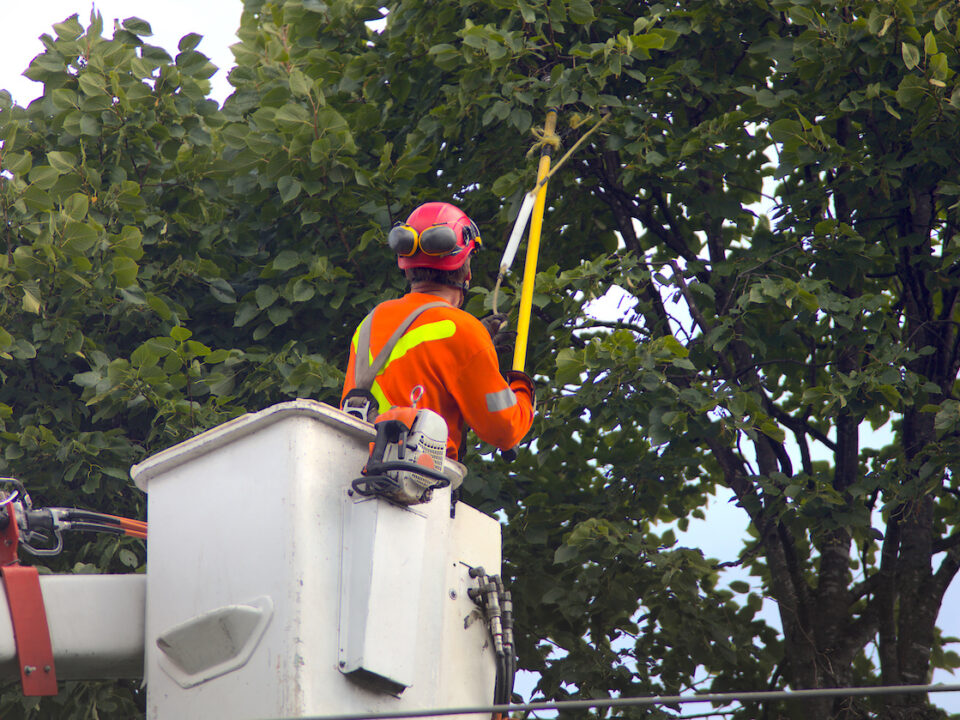Have you ever noticed that one tree in your neighborhood that takes you by surprise every year with its beautiful red foliage? That tree is the October Glory Maple Tree.
It’s widely adaptable across the United States and will perform for you year after year – even if the climate is mild.
The October Glory Maple is one of the most popular Maples for many reasons.
Some Facts About the October Glory Maple
The October glory maple tree is actually a cultivar of the more common red maple or Acer rubrum. These trees grow well under a variety of conditions, provide spectacular autumn color and bright red, showy fruit. As a hardy, all-purpose tree, it is hard to go wrong with this variety.
Its most distinguishing characteristic, its scarlet red autumn foliage, begins in early October, as the name suggests. The spectacular scarlet coloration persists for weeks, often after many neighboring species have already shed their leaves. Accompanying the striking foliage are clusters of shiny, bright red fruit that attract numerous bird species to your yard – a contrast to the usually drab brown keys most maples produce.
In winter, the softly-hued gray bark provides a welcome relief from the drab monotony of darker trees, and in springtime the October glory bursts with color as it blooms with countless tiny but vivid red flowers. During the summer, the lush, dark-green leaves provide a hint of the brilliance to come.
A Brilliant Foliage Display
For several weeks, you’ll be treated to one of the most vibrant displays of any tree in your neighborhood. It would look spectacular in your yard as a central focus, or equally at home near other plantings due to its upward growth.
Imagine a nice, neat row of October Glory lining your drive or planted along the fence line. You’ll love this formal look in your landscape. This hard-working, gorgeous tree will bring you so much joy! You may not notice the tiny red flowers in spring, but your local butterflies will.
Dark green leaves drape the branches all summer long and cast a wonderfully lush shade.
October Glory is known for its ability to give a tremendous fall color display, even in the warmer climates. Other Red Maples need constant lowering temperatures in the fall to ensure good fall color. Not the October Glory.
Why The October Glory Maple is Such a Winner For Any Landscape
Rapid growth, reliability, and enduring fall color make it a perfect specimen tree. You do need to be aware that the trunk is sensitive to weed eater damage as a young tree. It can be severely set back from weed eater contact. We recommend that you keep a space of about 1 foot around the trunk clear of all grass.
Doing this will help you clearly identify how close you or landscape staff can get to the trunk. Great results come from selecting an appropriate planting site. Plant in full sun for best results. Give your tree at least 20 feet of space away from driveways, walkways, or patios. October Glory requires fast-draining soils making it a perfect choice for our sandier soils.
Watering Your October Glory Maple
It won’t grow in standing water. Provide a consistent schedule of moisture, especially when the tree is first planted.
Give it more water during heat spikes. When planted in open space, add 3 to 4 inches of mulch spread out to 3 feet outside of the canopy. This will keep the root system cool during a hot summer. Because it prefers slightly acidic soil, feed it with an acidic fertilizer.
Fall is the Best Time to Plant an October Glory Maple Tree
When planting your October Glory Maple tree be sure you have the right location and conditions for your new tree to thrive. Spring and Fall are ideal times to plant. However, if you avoid freezing and hot temperatures you can plant your Maple almost any time of the year.
These trees tolerate full sun to part shade and prefer soil that is well-drained, slightly acidic, and nutrient-rich.
If you have alkaline soil, you can amend your soil. To acidify your soil, amend with compost, elemental sulfur, or use fertilizers specific for acid-loving plants. Mulching with pine straw or pine bark will help over time as they begin to break down, but are not an immediate solution for increasing acidity.
Add a layer of 2 to 3 inches of mulch. Do not allow the mulch to touch the trunk as this increases the chances of pests and disease. Maples should be watered often enough to keep the soil moist. Maples can tolerate a wet area, but they shouldn’t be in standing water.
Choose a slow-release fertilizer. When planting take care not to burn the roots by mixing the fertilizer into the soil before placing your tree in the hole. Maple trees don’t generally require pruning, but, if needed, prune when they are dormant to remove any dead, dying, or crowded branches, or to maintain shape.
Some Common Issues with The October Glory Maple
Occasionally fungal issues can arise. Generally, treating after the infection isn’t extremely effective, so if you have problems yearly treat in early spring with fungicides to prevent infection. Neem Oil is an organic method of treating some fungal diseases and pests. It can be effective, but the entire tree must be coated in order for this method to be effective.
Do you have an October Glory Maple in your yard? Do you need help deciding the types of trees that would work for your home? Let Warner Tree Service help. Contact us today.




